Introduction: Market echoes of extreme conditions
In August 2025, the crypto market was reignited by a wave of fervent MEME sentiment. A project named MYX surged from about $0.1 to a peak of $2.17 in just 48 hours, achieving an astonishing nearly 20-fold increase.
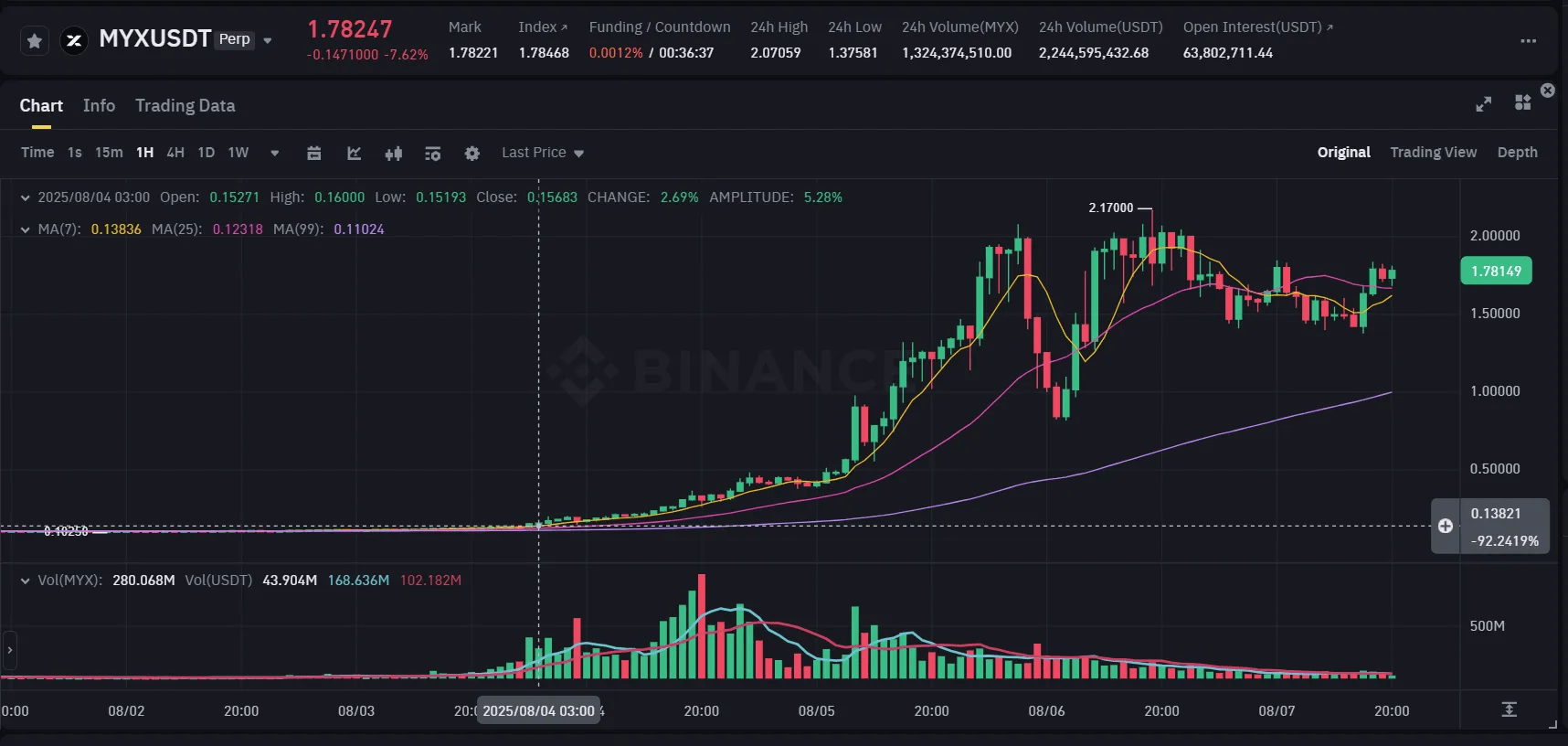
Data source: Binance MYX/USDT market screenshot
This extreme volatility not only stirred huge waves in the spot market but also triggered a massive game in the perpetual contract market of centralized exchanges (CEX). Statistics show that during the peak of MYX prices, Binance's MYX contract funding rate plummeted to an extreme level of -2%, with a settlement frequency as high as once an hour. This phenomenon intuitively reflects the high demand for market hedging and the resilience of short positions under continuous 'punishment' from funding rates.
In this capital frenzy, the 24-hour contract trading volume of MYX soared to $8.963 billion, a 31.91% increase month-on-month, with contract open interest reaching $136 million. Accompanying this was a staggering $16.22 million in liquidations, a figure second only to Bitcoin and Ethereum, illustrating the astonishing ripple effect of leverage in the MYX perpetual contract market.
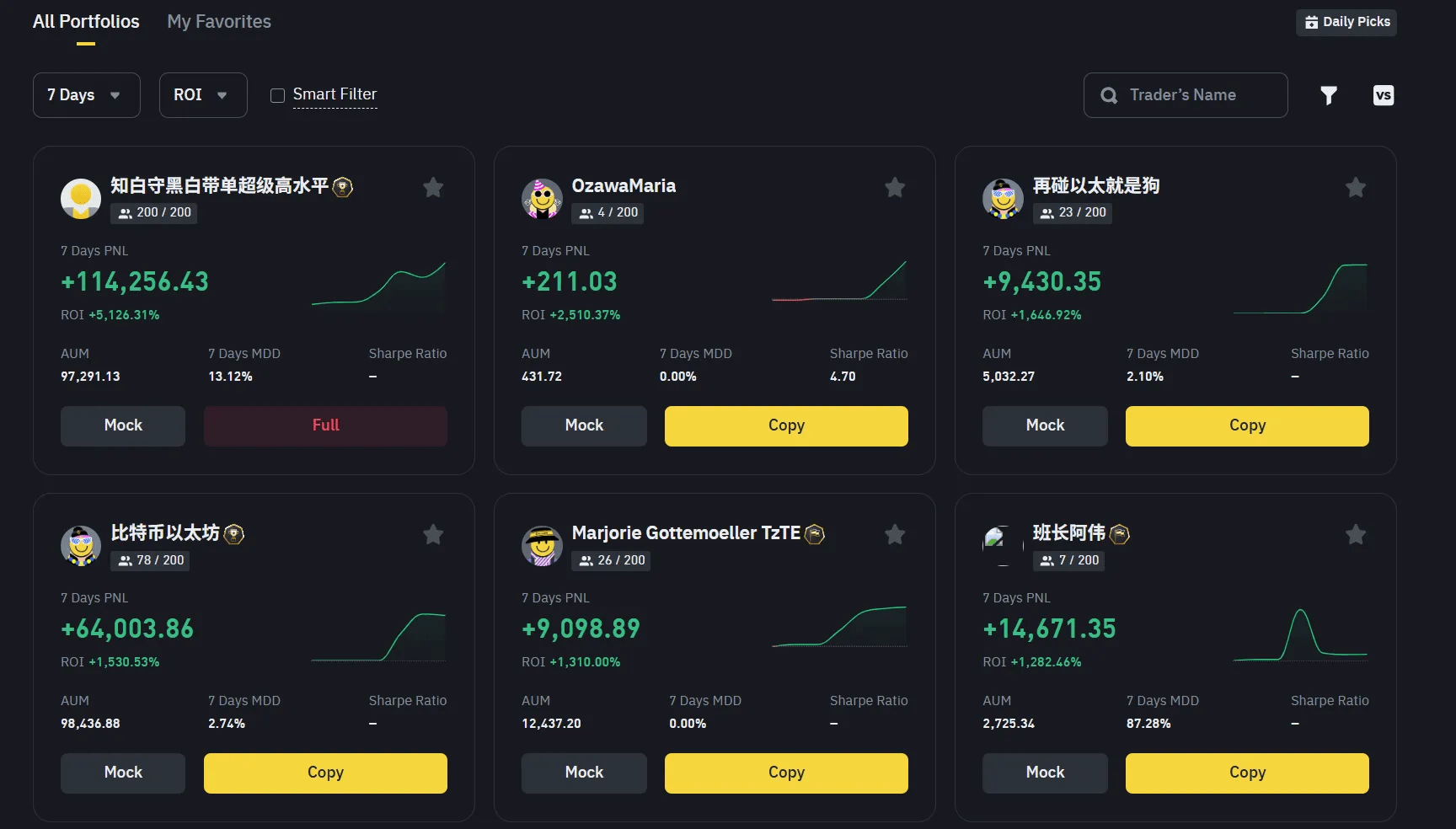
Data source: Binance follow trading page screenshot
In the CEX trading ecosystem, the popularity of MYX is directly reflected in the trading leaderboard. Traders who successfully captured the MYX market have exceptionally bright 7-day PNL (profit and loss) and ROI (return on investment) data, as if they mastered the wealth code overnight. However, behind this glamorous data lies completely different trading strategies and risk awareness. This article will deeply analyze two typical cases, revealing the behaviors and psychological games of successful and unsuccessful traders in extreme market conditions.
I. Winner Profile: Phased 'Market Hunter'
We first analyze a trader who achieved astonishing wealth growth in the MYX market. His social account data shows that relying solely on successful operations of MYX, he increased his assets under management (AUM) from zero to 100,000 USDT in just 7 days, with follow-up slots being snapped up instantly.
His trading strategy is not fixed but resembles an experienced hunter, employing different hunting methods depending on the market phase.
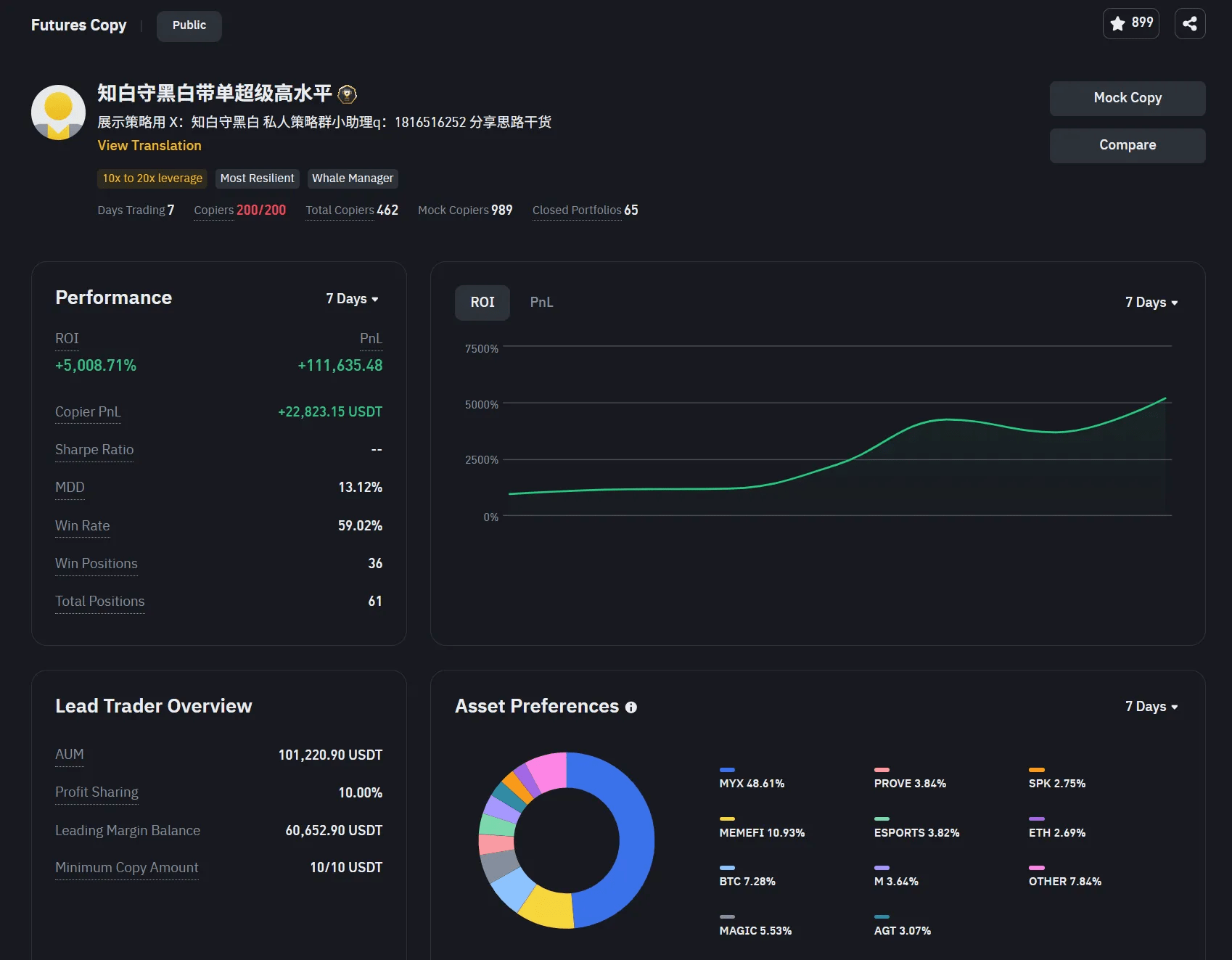
Data source: Binance trader 'Zhi Bai Shou Hei's high-level trading details
Phased trading strategies and position management
Phase One (August 4): Bottom building — 'Gambler's' precise bet.
When MYX prices were still in the low range of $0.19-$0.37, he demonstrated strong conviction and dared to build positions on a large scale. Single position sizes reached 100,000 to 300,000 MYX, which not only required keen insight into the project's fundamentals (or market sentiment) but also demanded strong capital strength and psychological resilience. This successful 'bottom fishing' laid a solid capital foundation for his subsequent operations.
Phase Two (August 5): Trend following and swing trading — flexible switching of 'guerrilla warfare'.
When the price entered the rapid rise phase of $0.48-$1.29, he no longer stubbornly held onto one-sided longs but flexibly switched between long and short positions. By engaging in both long and short operations, he successfully captured the main upward trend and shorted at local corrections, maximizing his profits. This strategy indicates he possesses strong adaptability, able to adjust tactics according to market dynamics.
Phases Three and Four (August 6-7): High-frequency oscillation trading and high position game — 'tasting blood on the knife's edge' risk probing.
After the price surged to a high oscillation range of $0.89-$1.95, his trades became more frequent. Despite continuing both long and short operations, some high-position chasing actions also resulted in losses. On August 7, he even made substantial positions in the $1.92-$2.05 top zone. This seemed risky, but his strict stop-loss discipline limited his maximum single loss to only $5,765 USDT, which is relatively controllable compared to his highest single profit of $15,681 USDT.

Data source: Weishi analysis of trading assistance (https://insights.wolfdao.com/)
The psychological portrait of successful traders
The success of this trader is not simply due to 'good luck', but rather the comprehensive embodiment of the following key traits:
Phased risk awareness: He understands that building positions at low levels is a high-return, relatively low-risk operation, hence he dares to heavily invest. When at high levels, he considers risk as the primary concern, profiting through small positions and high-frequency guerrilla trading, avoiding the huge risks of single trades.
Strict stop-loss discipline: Although he had some chasing behavior in the later stages, he did not let losses spiral out of control. His profit-loss ratio (average profit to average loss) reached 2.73:1, revealing his core risk management philosophy: let profits run and cut losses at the cradle.
Capital management strategy: he used the profits gained from heavy positions at the bottom as 'ammunition' for subsequent trades, ensuring that even if he incurred losses in high-risk trades later, it would not harm his principal. This 'using earned money to take risks' strategy is a common trait among many successful traders.
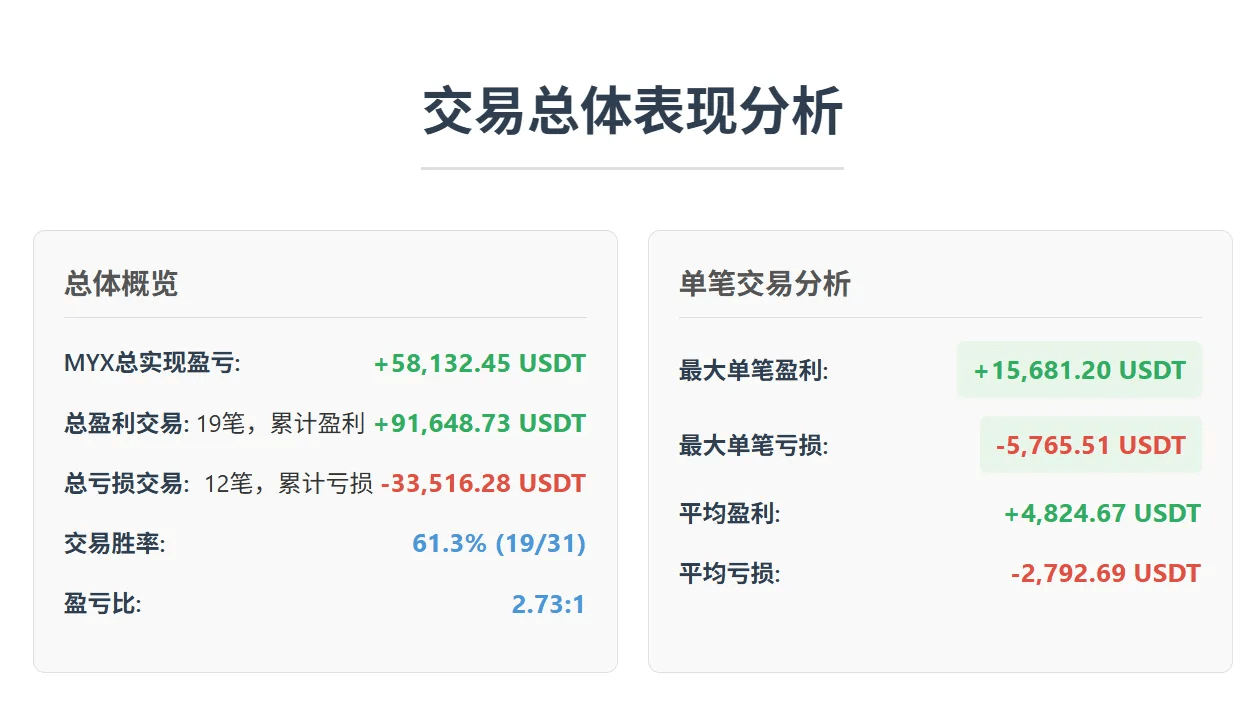
Data source: Weishi analysis of trading assistance (https://insights.wolfdao.com/)
II. Loser Profile: The gambler devoured by 'greed'
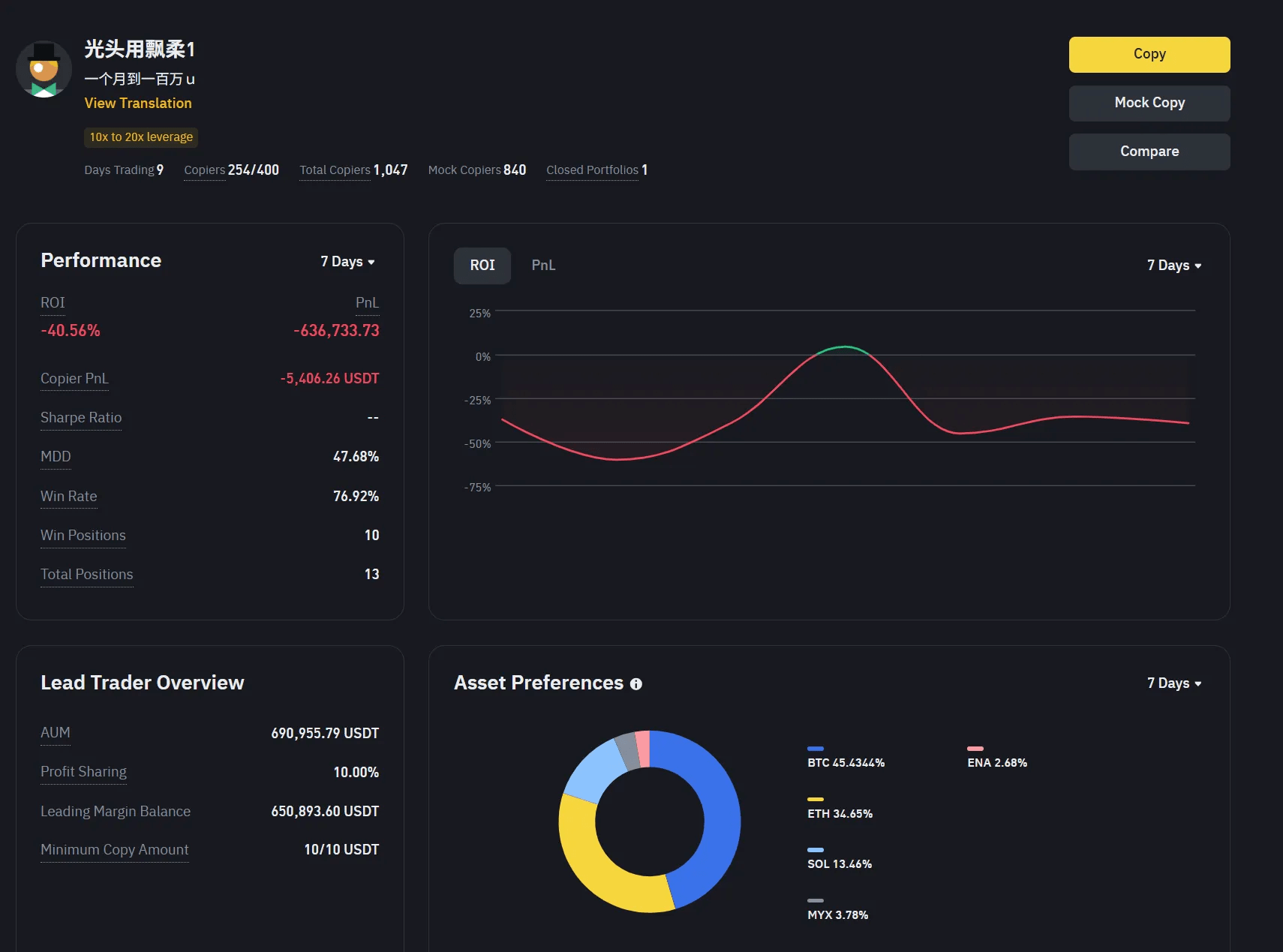
Data source: Binance trader 'Bald Guy with Soft Hair 1' trading details
In stark contrast to the successful trader, another trader suffered devastating blows in the MYX market. Data shows he lost over 636,000 USDT within 7 days, with most losses stemming from MYX trades.
Trading data analysis
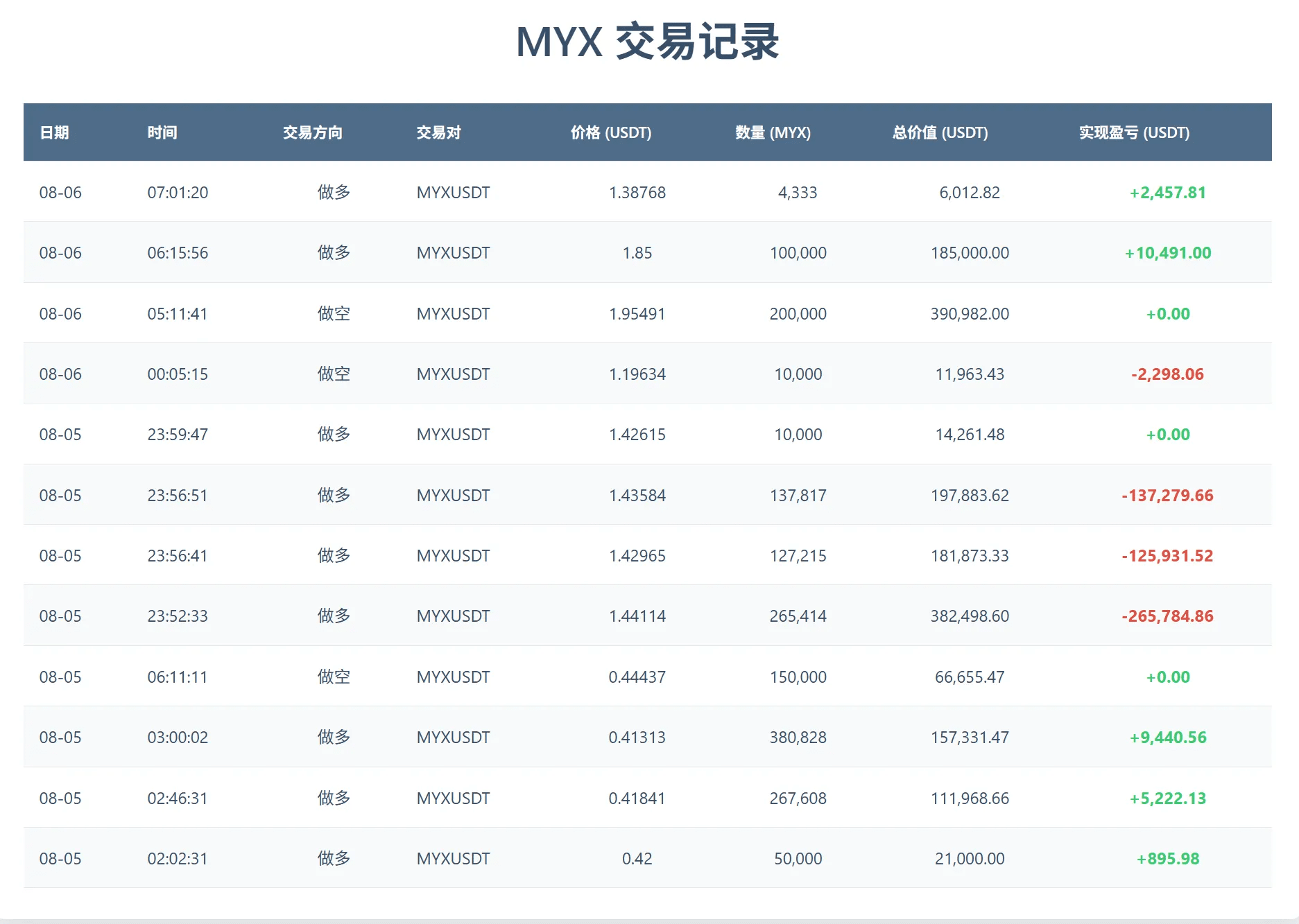
Data source: Weishi analysis of trading assistance (https://insights.wolfdao.com/)
This trader's total realized profit and loss on MYX is -497,981.50 USDT. Although he conducted 63 trades on MYX with a win rate of 55.6%, seemingly impressive, his grim outcome reveals a cruel truth about trading: win rate does not equal profit; the profit-loss ratio is the key determinant of survival.
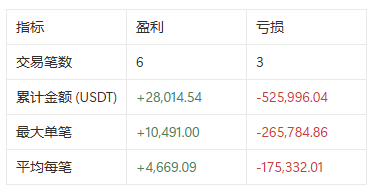
Data source statistics: Weishi analysis of trading assistance (https://insights.wolfdao.com/)
Successfully building positions at the bottom but failing to hold onto the gains: he had successfully gone long in the $0.41-$0.42 low range on August 5, accumulating profits exceeding 15,000 USDT. However, this success became a poison, inflating his confidence and making him blind to subsequent risks.
Chasing highs with uncontrolled positions: as the MYX price skyrocketed near $1.4, he completely lost his rationality. He executed three large long positions consecutively, with the highest single position reaching 265,000 MYX. This aggressive Martingale-style scaling and chasing behavior ultimately led to catastrophic consequences when the price reversed.
A fatal 'no stop-loss': this trader's maximum single loss reached $265,784.86 USDT, almost half of his total loss. This figure starkly contrasts with his maximum single profit of $10,491 USDT, yielding a risk-reward ratio as low as 1:18, completely violating the basic principles of risk management. He failed to 'hit the brakes' when losses expanded, instead attempting to 'recover' through larger positions, ultimately being mercilessly consumed by the market.
III. Final Conclusion: The essence of trading is not 'how much one made', but 'how long one survived'.
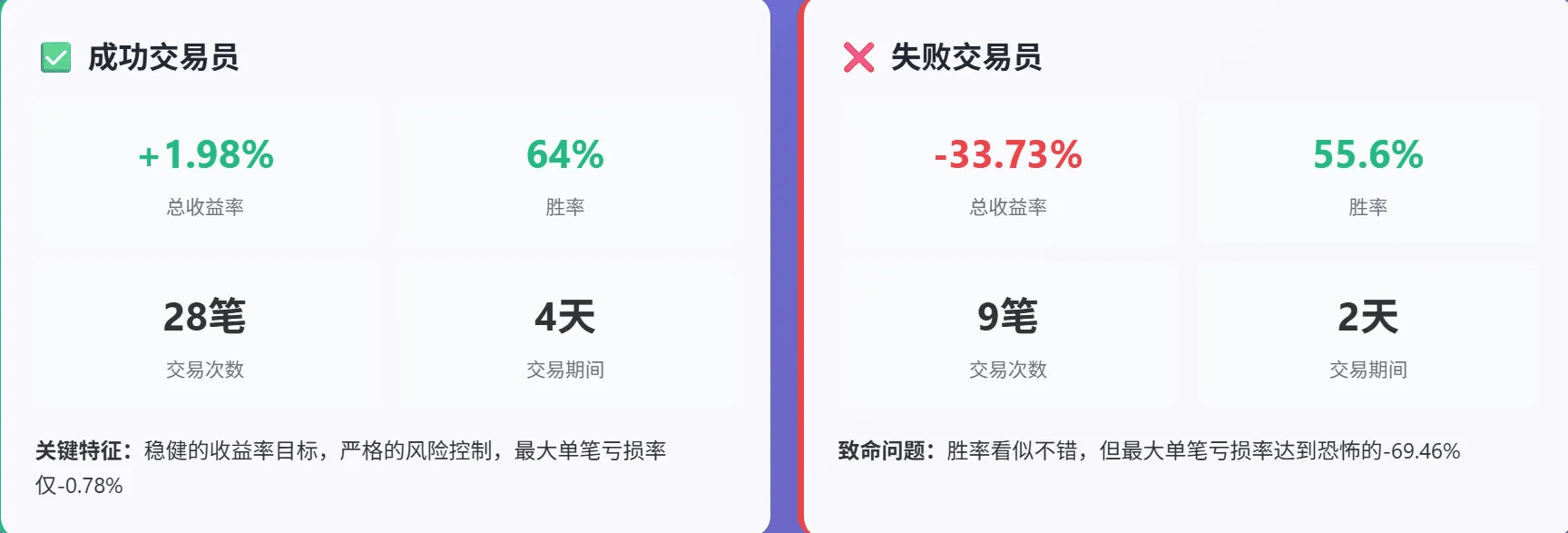
Data source: Weishi analysis of trading assistance (https://insights.wolfdao.com/)
Detailed yield rate comparison:
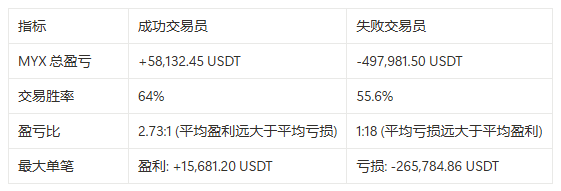
The starkly different fates of these two traders in the MYX market provide us with valuable lessons:
Trading is risk management, not profit forecasting: successful traders prioritize risk control, protecting their capital through strict stop-loss and position management. In contrast, unsuccessful traders are blinded by 'greed', equating high risk with high reward, ultimately placing themselves in irretrievable situations.
Phased strategy adaptability is crucial: professional traders must adopt different trading strategies in different market environments. At the bottom, one must dare to heavily invest; at the top, one must cautiously take profits, or even reverse positions.
Emotional control is a trader's 'basic skill': successful trading is a meticulously planned battle, where every decision is made after careful consideration. In contrast, unsuccessful trading often resembles an emotion-driven gamble, driven by fear and greed.
In the jungle of the enticing and treacherous crypto market, living longer is the key to becoming the ultimate winner. The essence of successful traders is not in 'how much they can earn', but in 'how long they can survive'.

